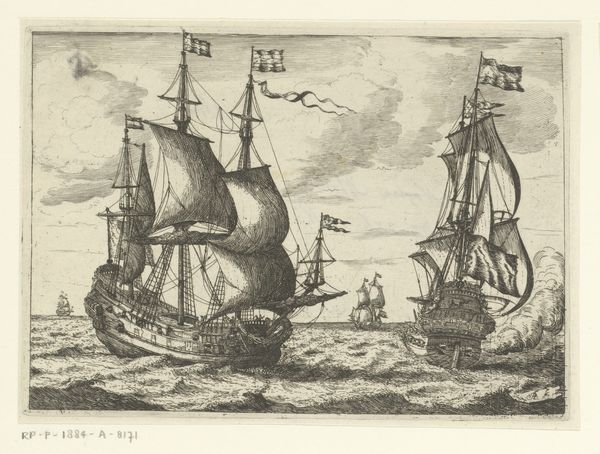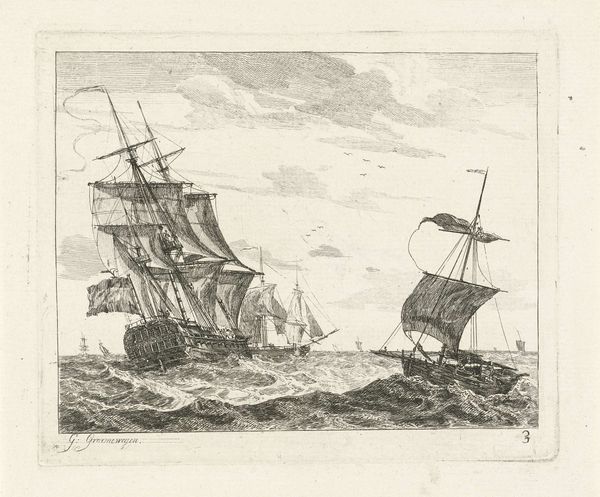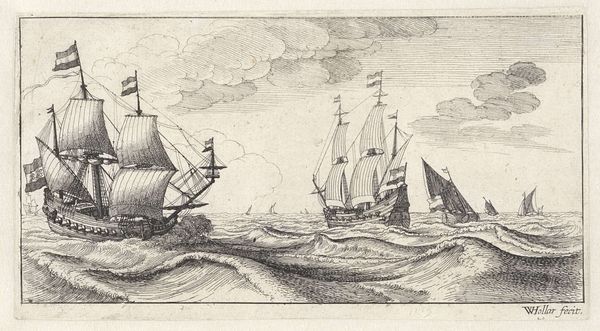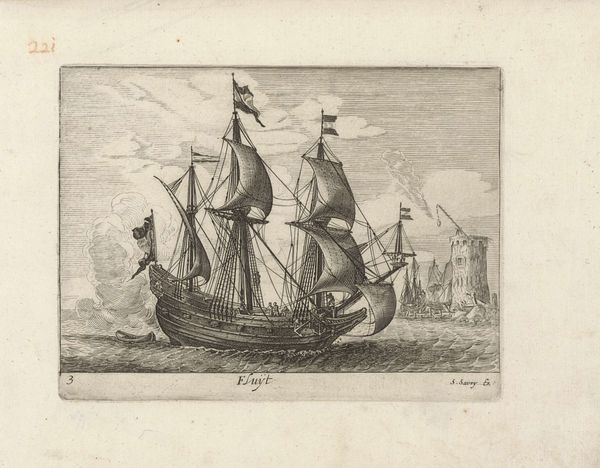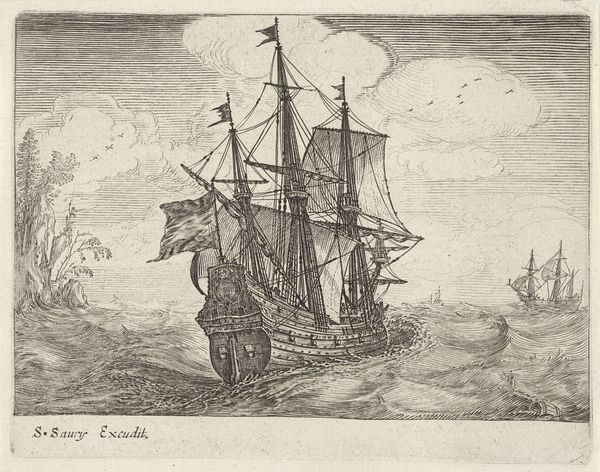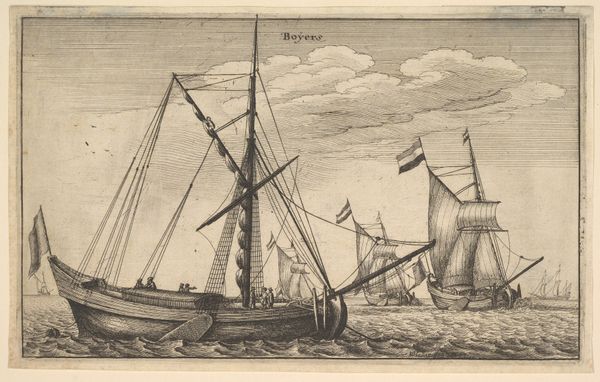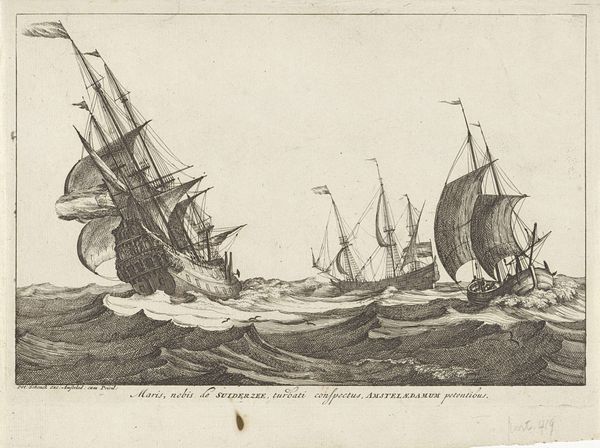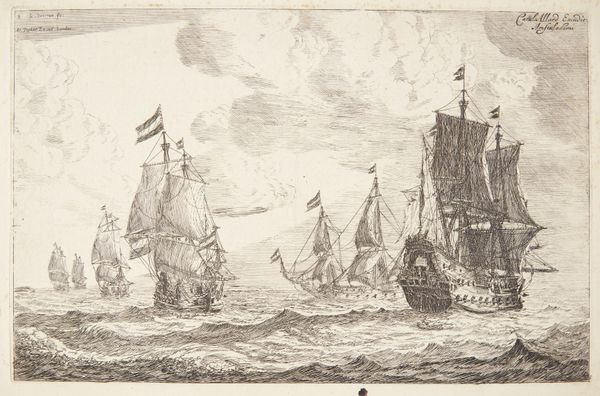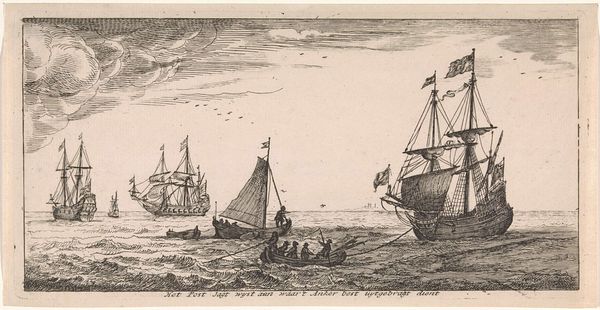
print, etching
#
dutch-golden-age
# print
#
etching
#
landscape
#
line
Dimensions: 130 mm (height) x 140 mm (width) (bladmaal)
Curator: My immediate impression is the dynamism; look how the water almost writhes under these ships. There's such a palpable sense of maritime energy here. Editor: Indeed! Today we’re observing a work created by Reinier Nooms between 1623 and 1664. Currently residing here at the Statens Museum for Kunst, it’s an etching simply titled "To skibe for sejl, det ene en galiot" which translates to "Two Ships Sailing, One a Galliot". Curator: That title is perfectly straightforward. Yet it almost downplays the complex symbolism embedded within. Water, particularly the sea, so often represents the subconscious, the place of dreams, chaos and even the possibility of oblivion. Here, Nooms' rendering is full of anxiety. Editor: As an etching, it uses lines to convey that emotionality that you rightly describe. Etchings were more easily reproduced, weren't they? This meant imagery became more widely distributed, reinforcing certain social and political values. The Dutch had a flourishing maritime culture during that era. Curator: Precisely. Ships themselves held incredibly loaded meaning for this culture. They embodied trade, exploration, and national identity. Looking closely, we can almost hear the creak of the wood, smell the salt air, feel the ambition and perhaps also the precarity of that seafaring life. Look closely at the flags. They convey that political statement we look for. Editor: Absolutely. Dutch ships also came to symbolize national pride and economic power but also the risks that went with that success: potential conflict with other maritime powers. But that level of detail is perhaps unsurprising. I’ve read Nooms himself worked on ships from a young age. He surely knew these vessels intimately. Curator: Which is what grants the artwork a deeply felt, experiential quality. It’s not merely a representation; it’s an embodied experience translated into ink, carrying centuries of shared, cultural memories. Editor: So a deeper connection than merely aesthetic admiration, something intrinsically Dutch Golden Age. I now appreciate better how this reflects wider political narratives and lived experiences of its time. Thank you.
Comments
No comments
Be the first to comment and join the conversation on the ultimate creative platform.
